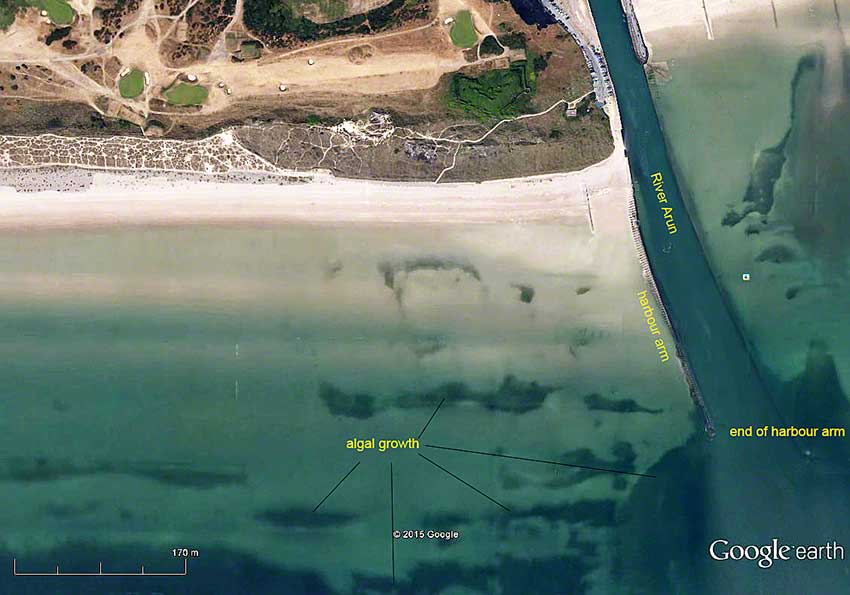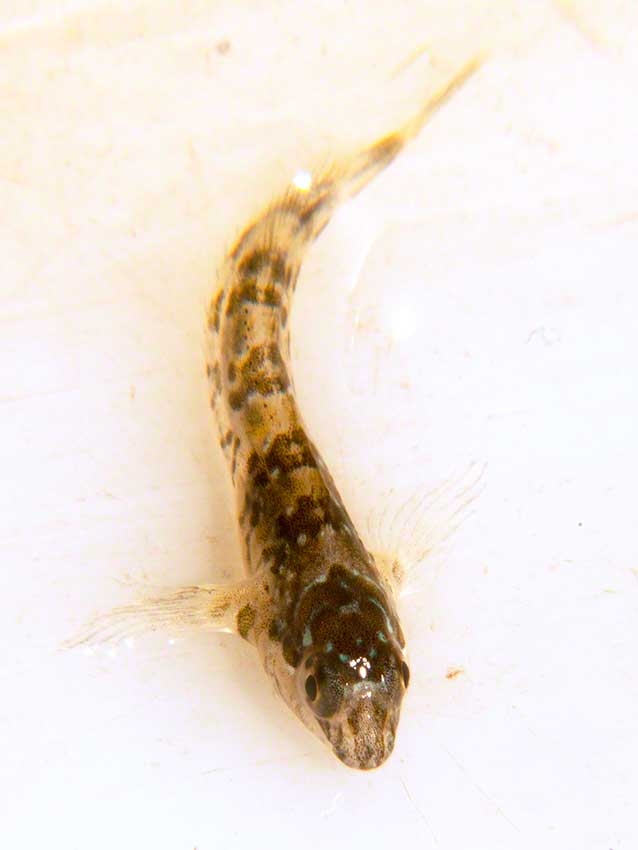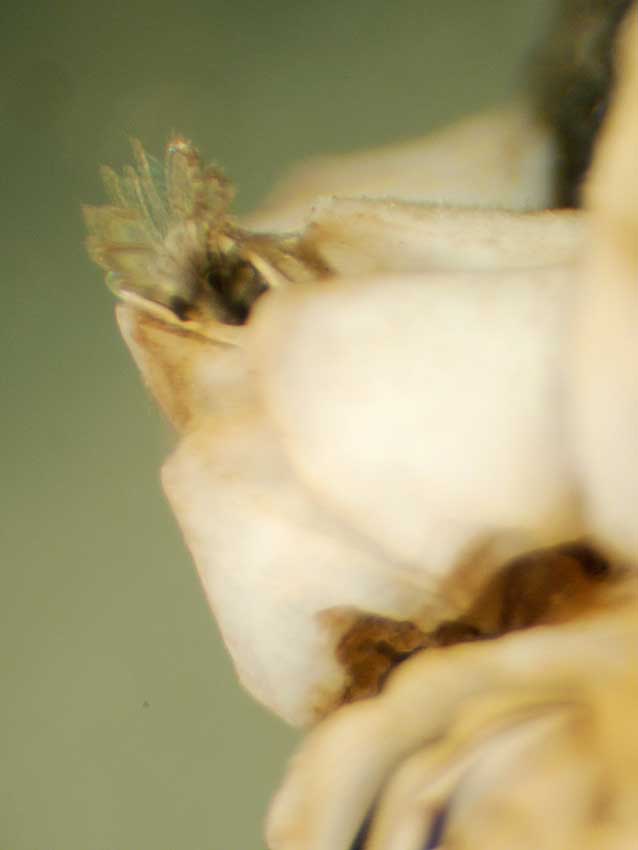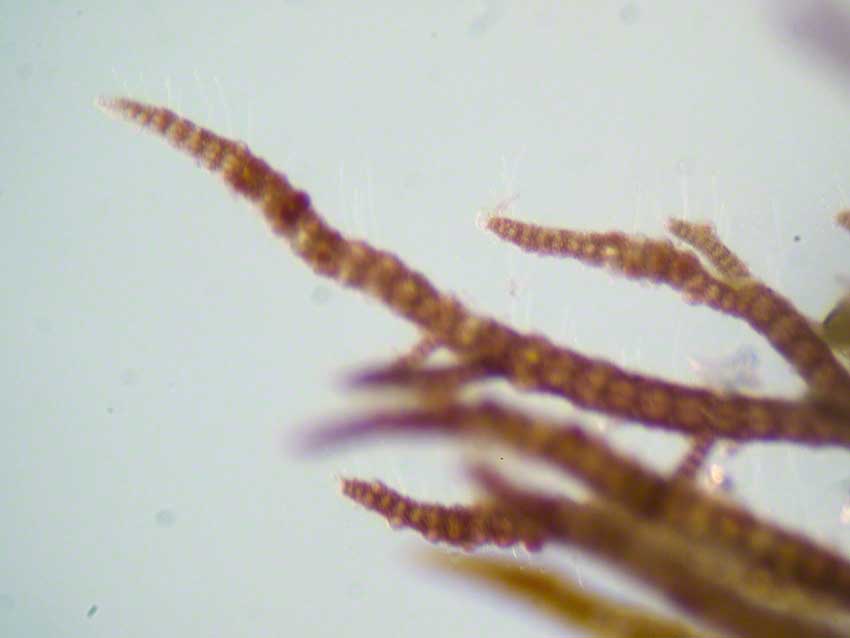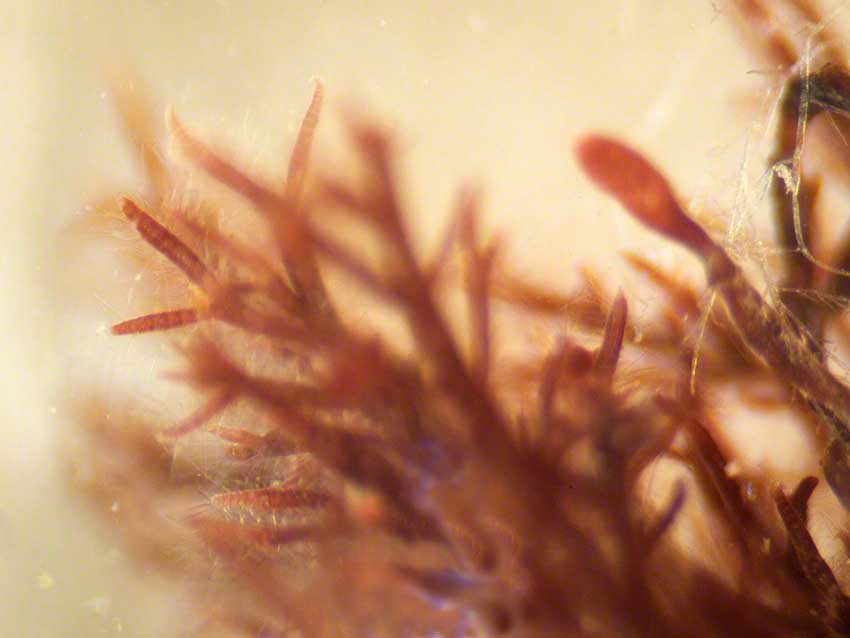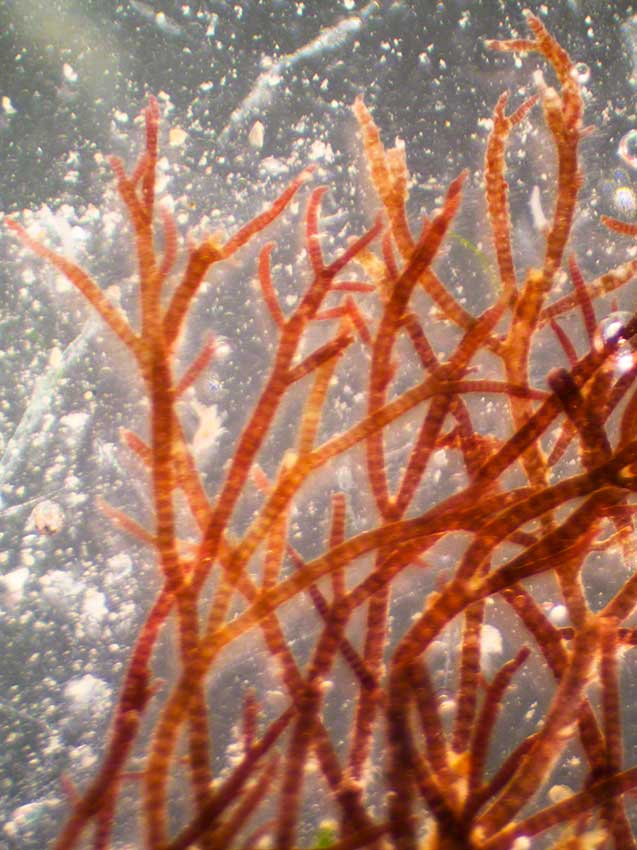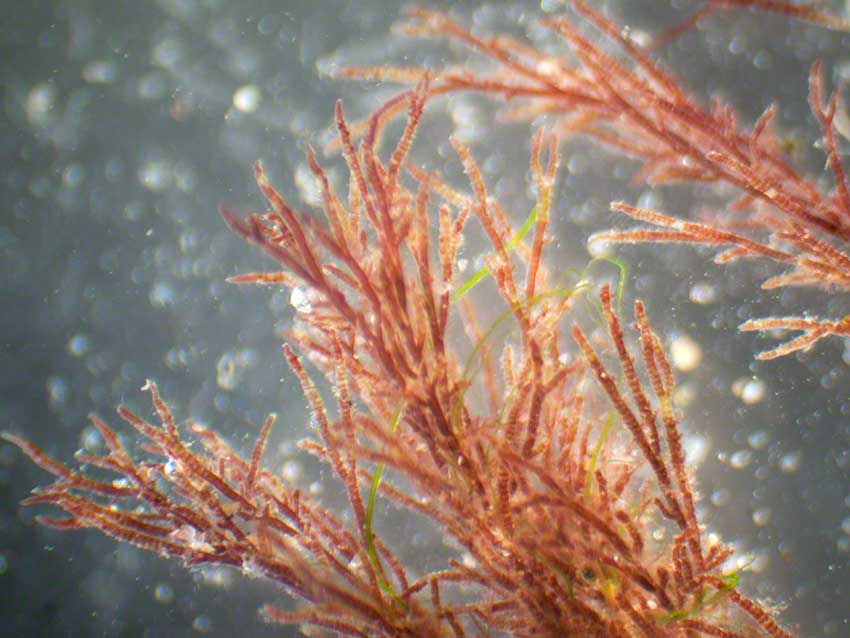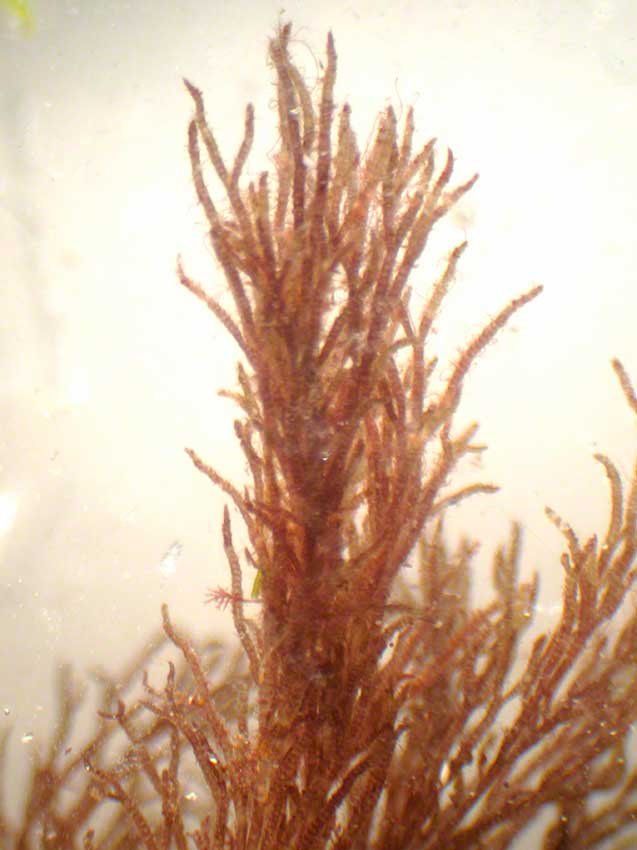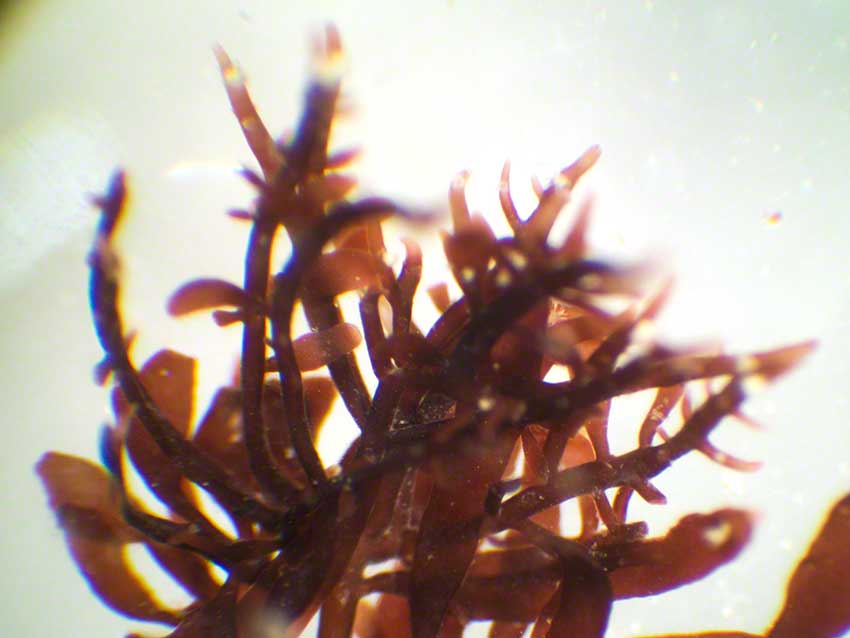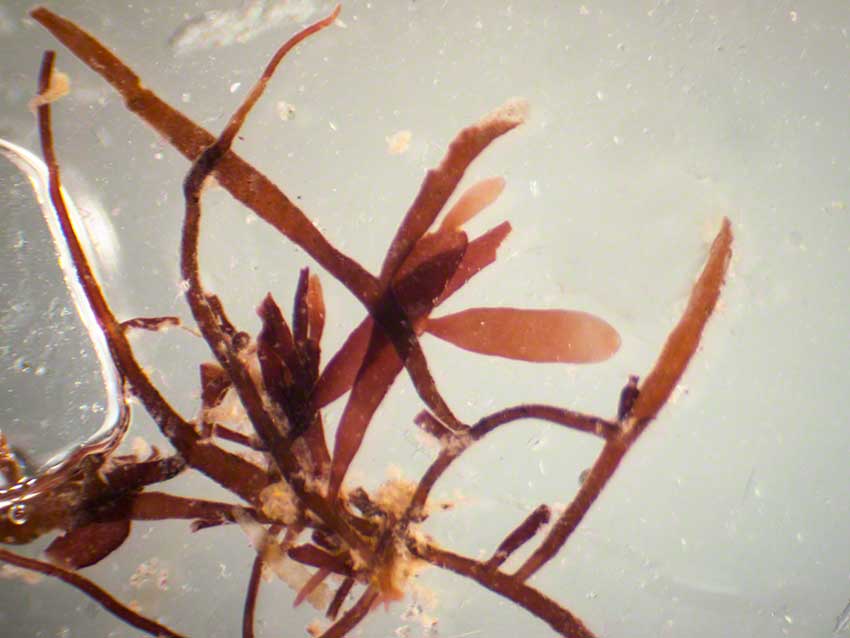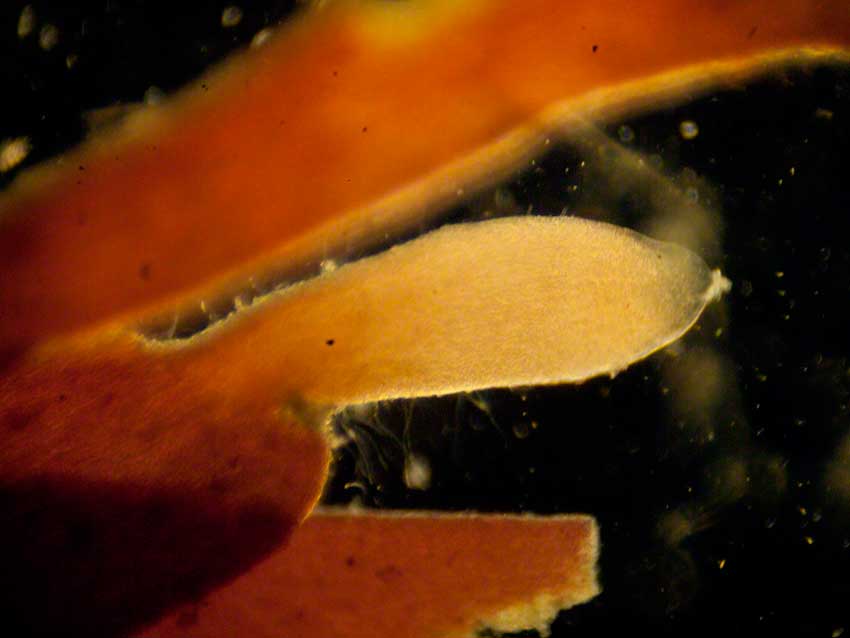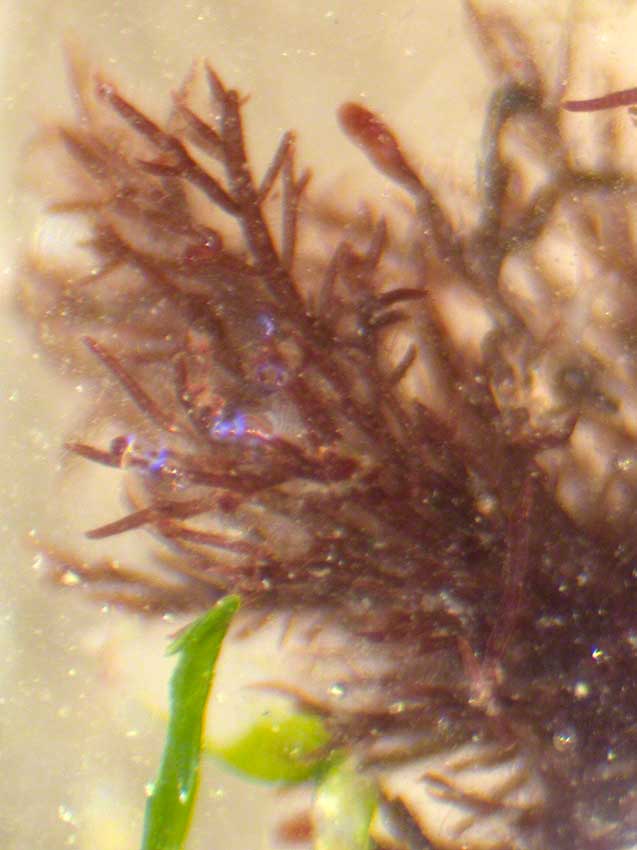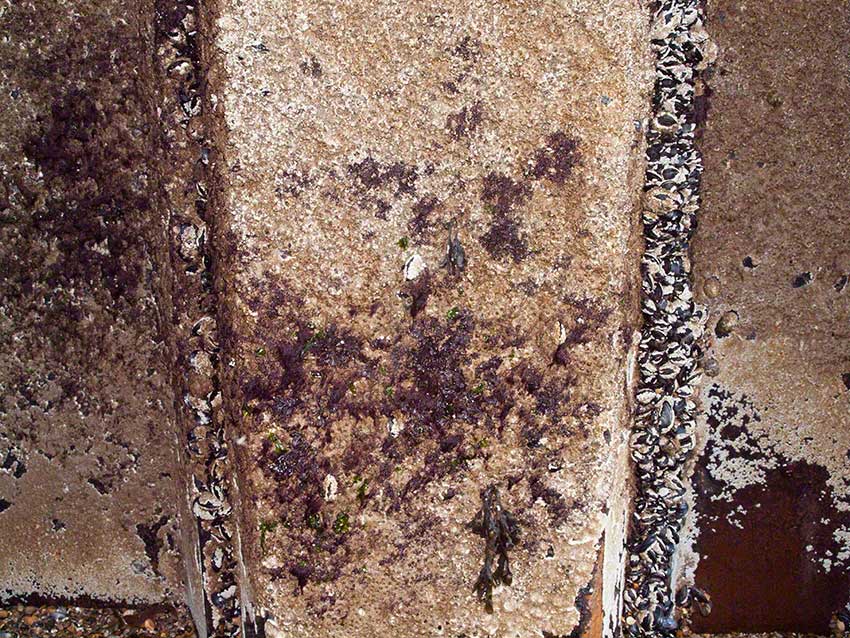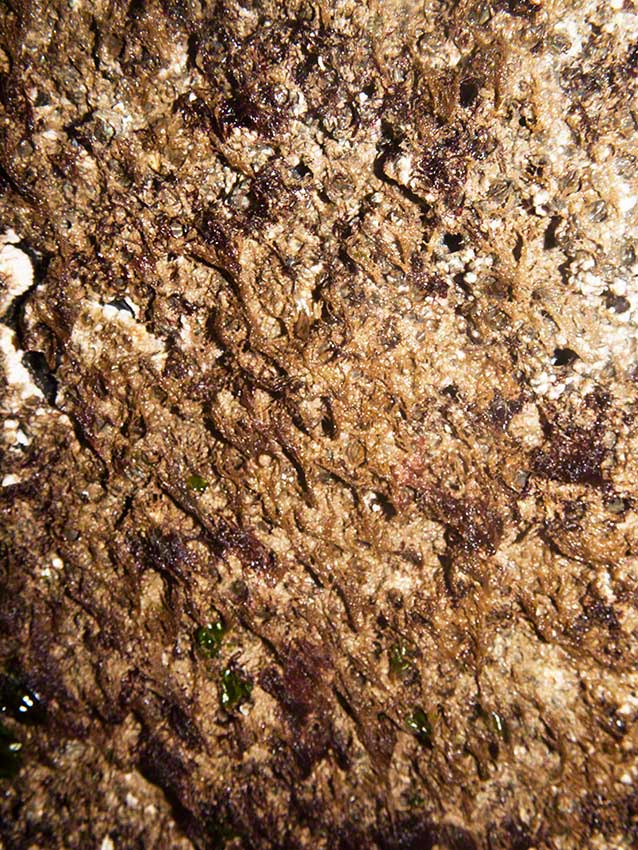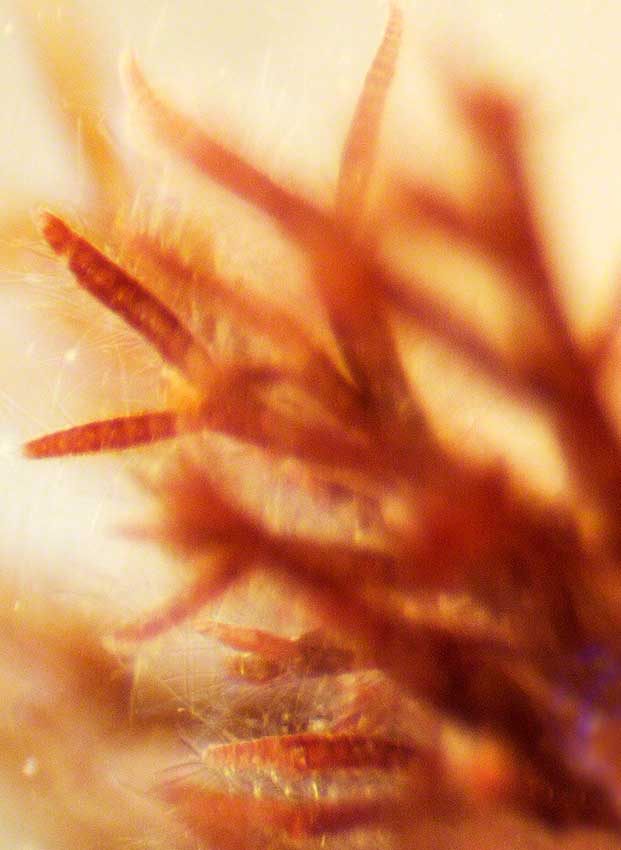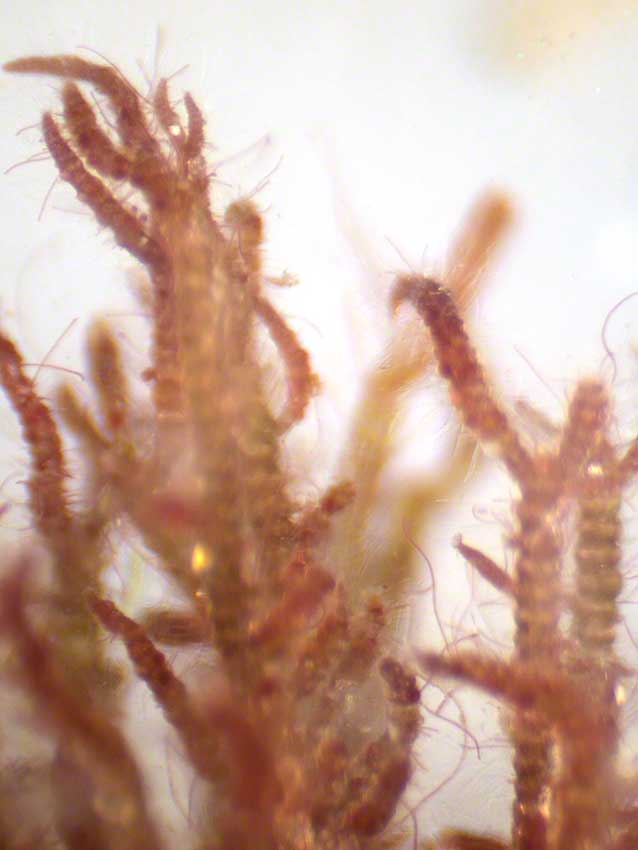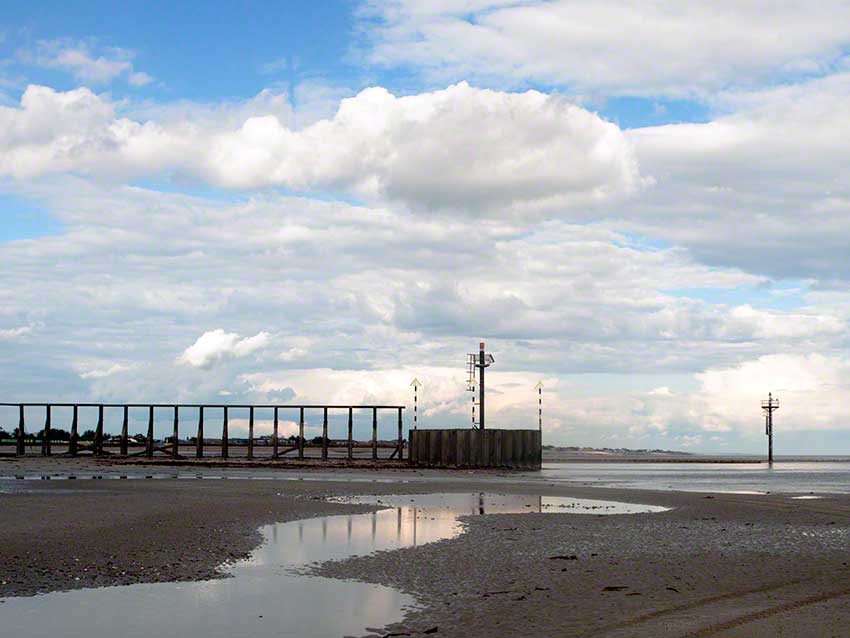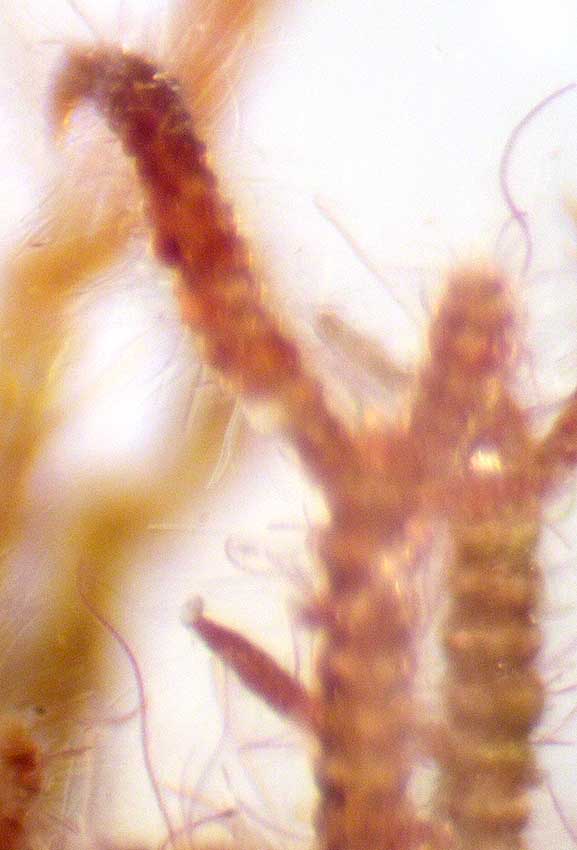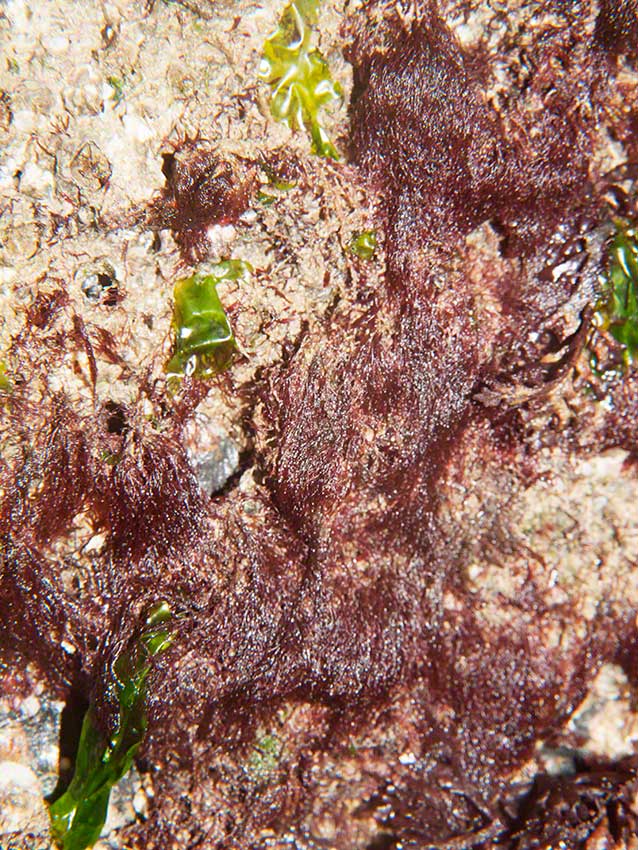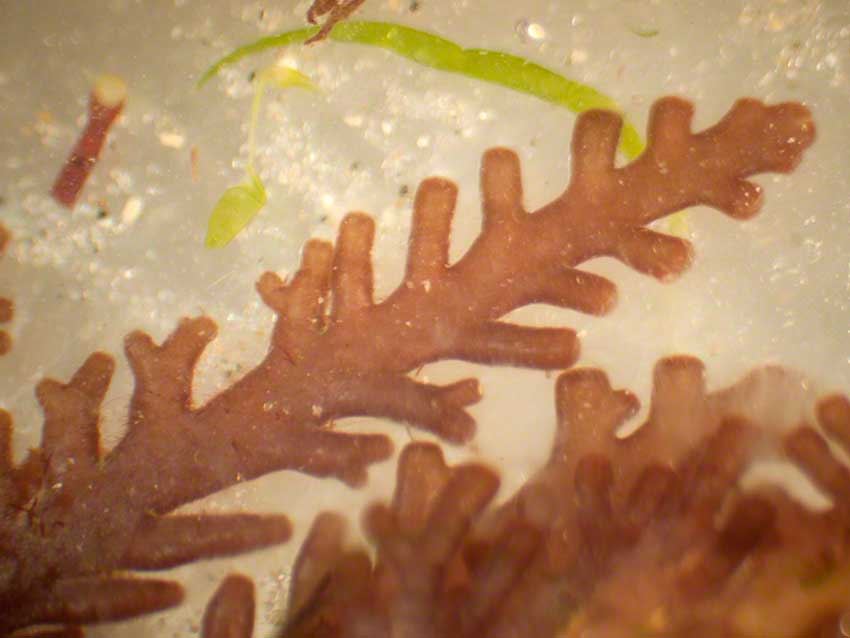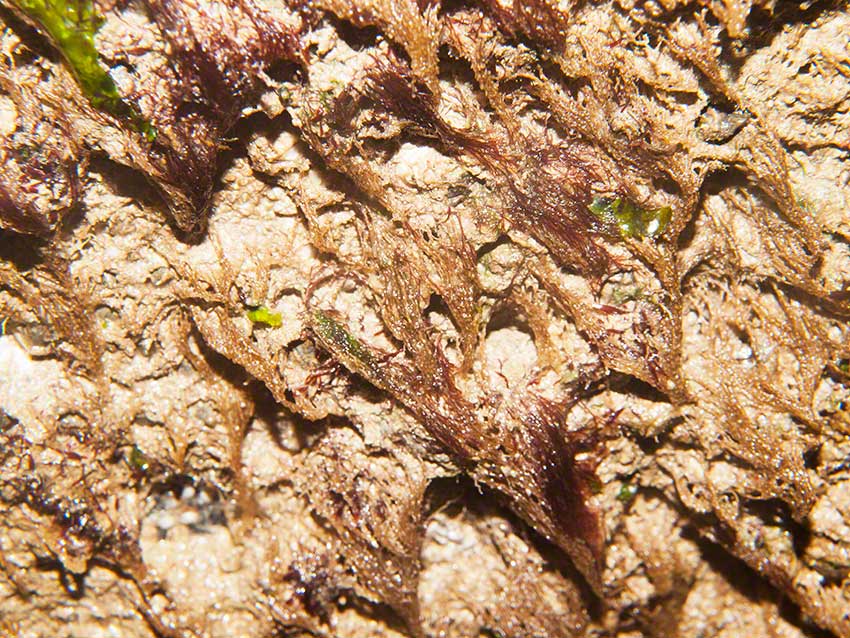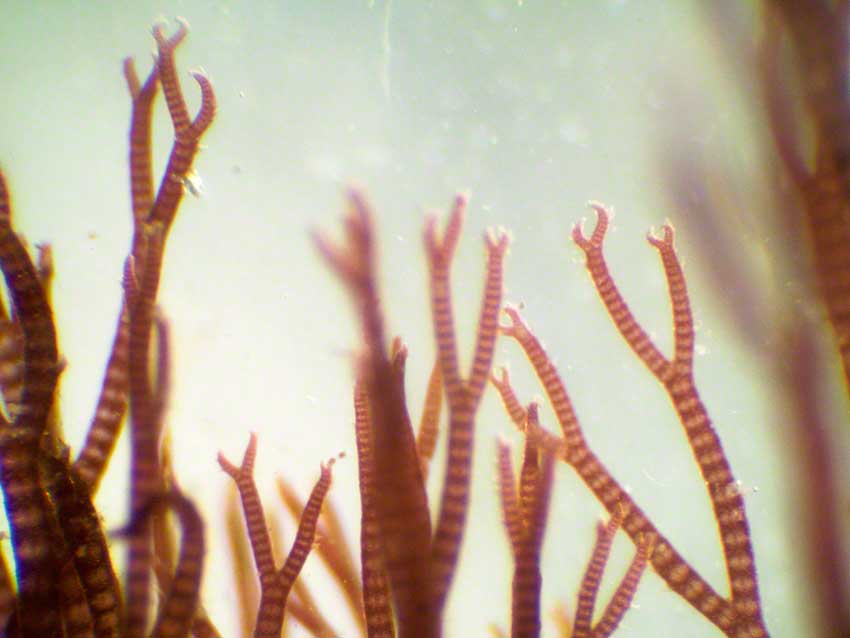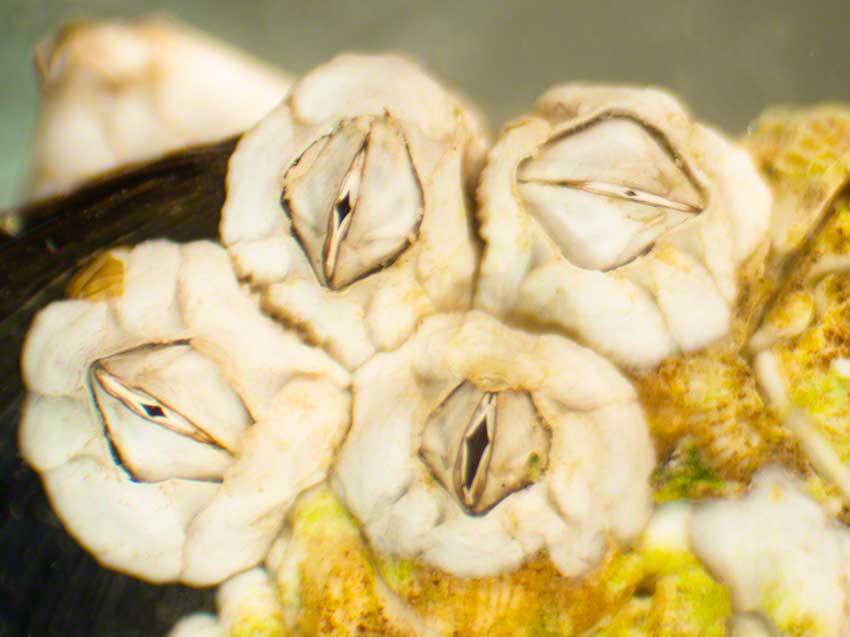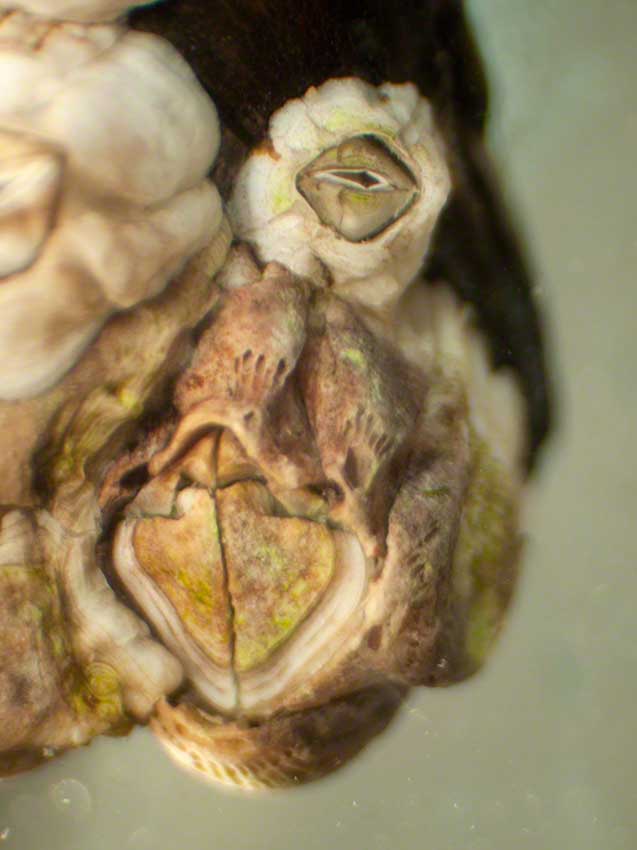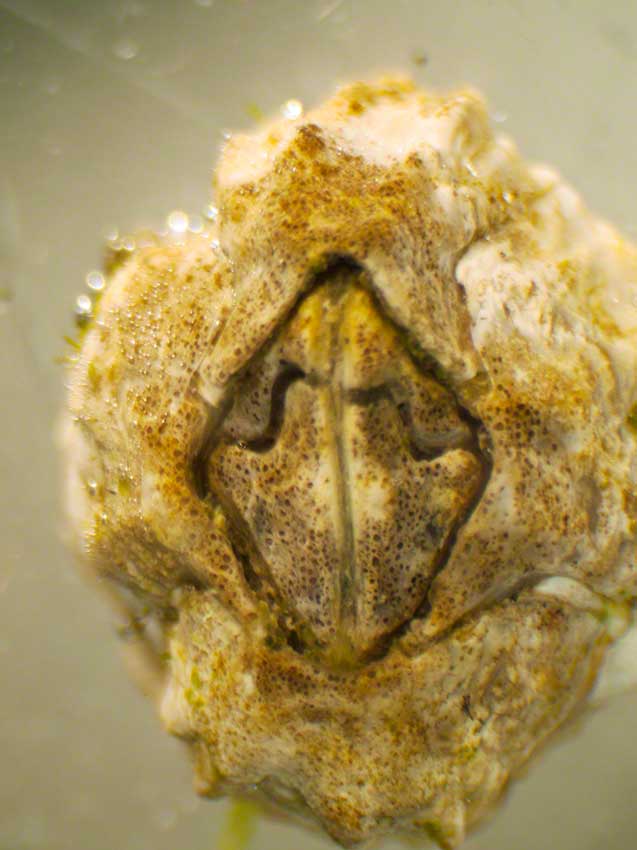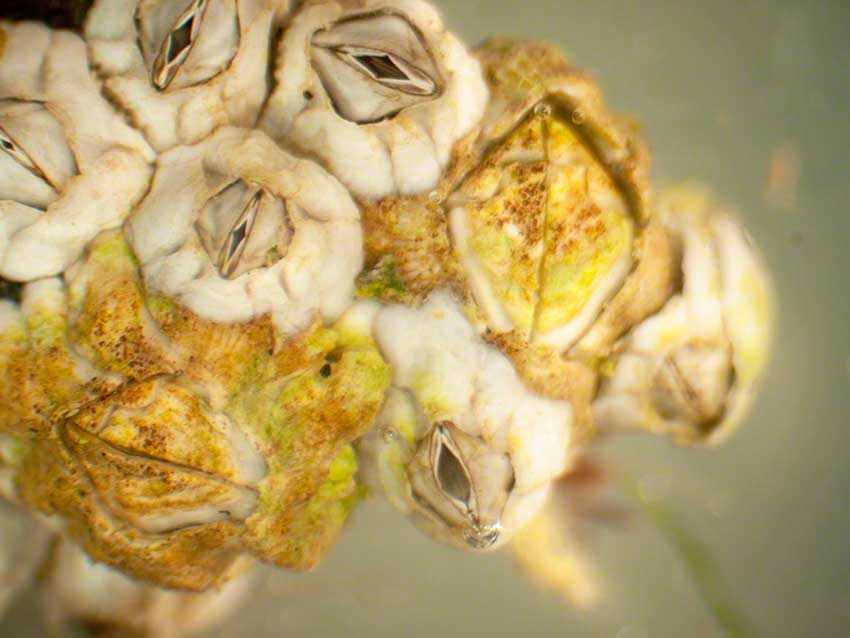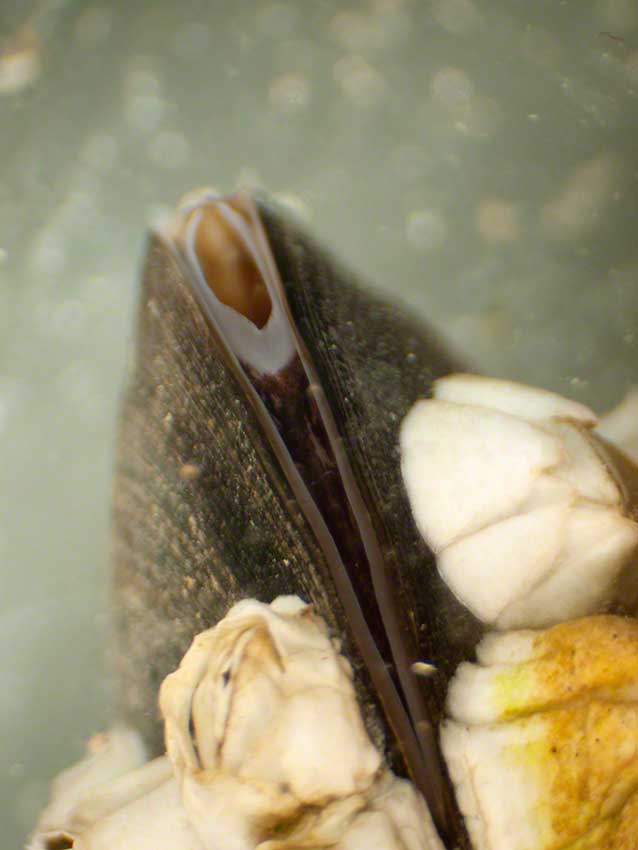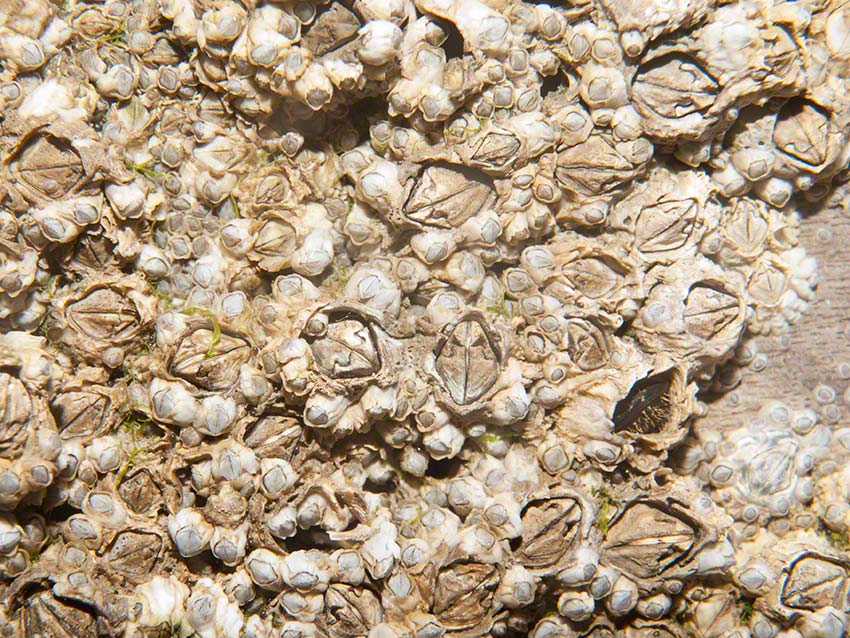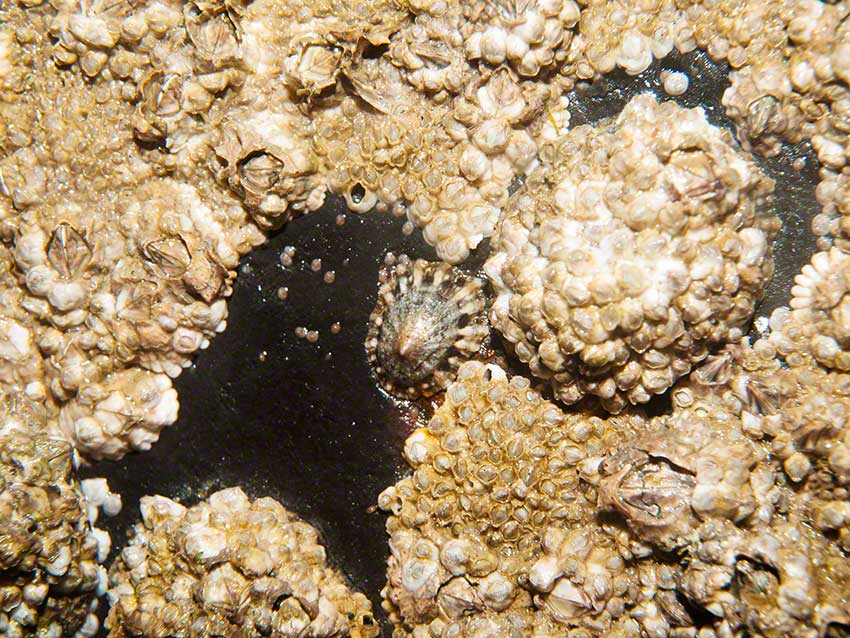Littlehampton west beach consists of fringing shingle adjacent to the dunes then fine sand angled at approximately 1.6°, extending some 280m from the edge of the dunes to mean low water. The mean splash zone below the dunes extends some 15m to the mean spring tide line followed by the mean tidal level 27m in front of the dunes and the neap tide level at 38m. This part of the shore is completely dry most of the time. Below this the sand is compact and wet at low water. Scattered and areas of cobbles and pebbles appear and disappear from season to season. These can support attached algae, shore crabs, shellfish, etc. Areas of the beach can be extensively covered in drift weed torn up from the sublittoral and including mermaid’s tresses, Chorda filum, green algae and a rich variety of red algae. At extremely low water springs these rich ‘seaweed gardens' become uncovered and support a diverse range of life.
Close to the harbour arm and a little off-shore, the freshwater from the River Adur has some influence on the species found. Notable on the harbour arm is the dominance of the freshwater tolerant introduced barnacle Elminius modestus that came in from New Zealand during WWII. It very successfully competes for space with the acorn barnacle Semibalanus balanoides that only occurs as isolated individuals on the harbour arm.
Lug worm, Arenicola marina and associated fauna including occasional sand mason worms, Lanice conchilega, occur in the sand from the mid shore to low water.
The 2015 survey yielded relatively few species associated with the harbour arm, far fewer than previous years. Whether this is significant is not clear as faunal diversity can go up and down over time and the effects of winter/spring storms etc can severely restrict growth and colonisation early in the year. Very few patches of barnacle spat were evident in 2015 compared to previous years. There was also a distinct lack of hydroids, fewer littorinids and fewer littorinid species, and fewer dogwhelks, Nucella lapillus, present.
Species Recorded are given below followed by a gallery of images.
| Species | Common Name / Description | SACFOR* | 2014 | 2015CNIDARIAObelia geniculata | A seafir | CDynamena pumila | A seafir | OAnemonia viridis | Snakelocks anemone | RANNELIDA: POLYCHAETALanice conchelega | Sand Mason sand by harbour arm | OArenicola marina | Lugworm sand by harbour arm | F | OPomatoceros triqueter | Keel worm | R | RECTOPROCTA/BRYOZOAAlcynidium gelatinosum | A sea mat - bryozoan | RMOLLUSCACerastoderma edule | Common cockle sand by harbour arm | RMytilus edulis | Edible mussel | A | CCrepidula fornicata | Slipper limpet | O | RGibbula umbilicalis | Flat top shell | RGibbula cinerarea | Grey top shell | OLittorina littorea | Common periwinkle | O | OLittorina saxatilis | Rough periwinkle | O | RNucella lapillus | Dogwhelk | F | RCRUSTACEABalanus perforatus | Volcano barnacle | OElminius modestus | A barnacle [mis-id as Sem-bal in 2014] | A | ASemibalanus balanoides | Acorn barnacle | R | RCrangon crangon | Brown shrimp sand by harbour arm | OCarcinus maenas | Shore crab | R | RPaleamon serratus | Common Prawn pool by harbour arm | O | RGammarus locustra | A sand-hopper | C | OMelita gladiosa | A sand-hopper | CPontophilus fasciatus | A shrimp | R | VERTEBRATA: PISCESLipophrys pholis | juvenile shanny pool by harbour arm legs O | OPleuronectes platessa | juvenile plaice | RAmmodytes tobianus | Lesser sand eel | RPleuronectes platessa (juv.) | Plaice (juv.) | RPomatoschistus minutus | Sand goby | R | RALGAEFucus serratus | Serrated wrack | OFucus vesiculosus | Bladder wrack | O | FUlva linza | Gut weed - green algae | F | CUlva lactuca | Sea lettuce - green algae | O | RPolysphonia sp. | Red algae | RDilsea carnosa | Red rags | ROsmundia pinnatifida | Pepper dulse NOT = Gelidium pusillum? | O | OPorphyra purpurea | A purple laver | FCorallina officinalis | Coral weed | RPhymatolithon sp. | A paint weed | RRed 1 | tiney tough branching | A mid lowerRed 2 | fine | nodular hairy | A lowerRed 3 | smll | narrow flat branched | F lowerCeramium check sp | . A pincer weed | R |
|---|
* Abundance scale SACFOR: S Super abundant; A Abundant; C Common; F Frequent; O Occasional; R Rare.
Some image: mouse-over for details; click to enlarge.

